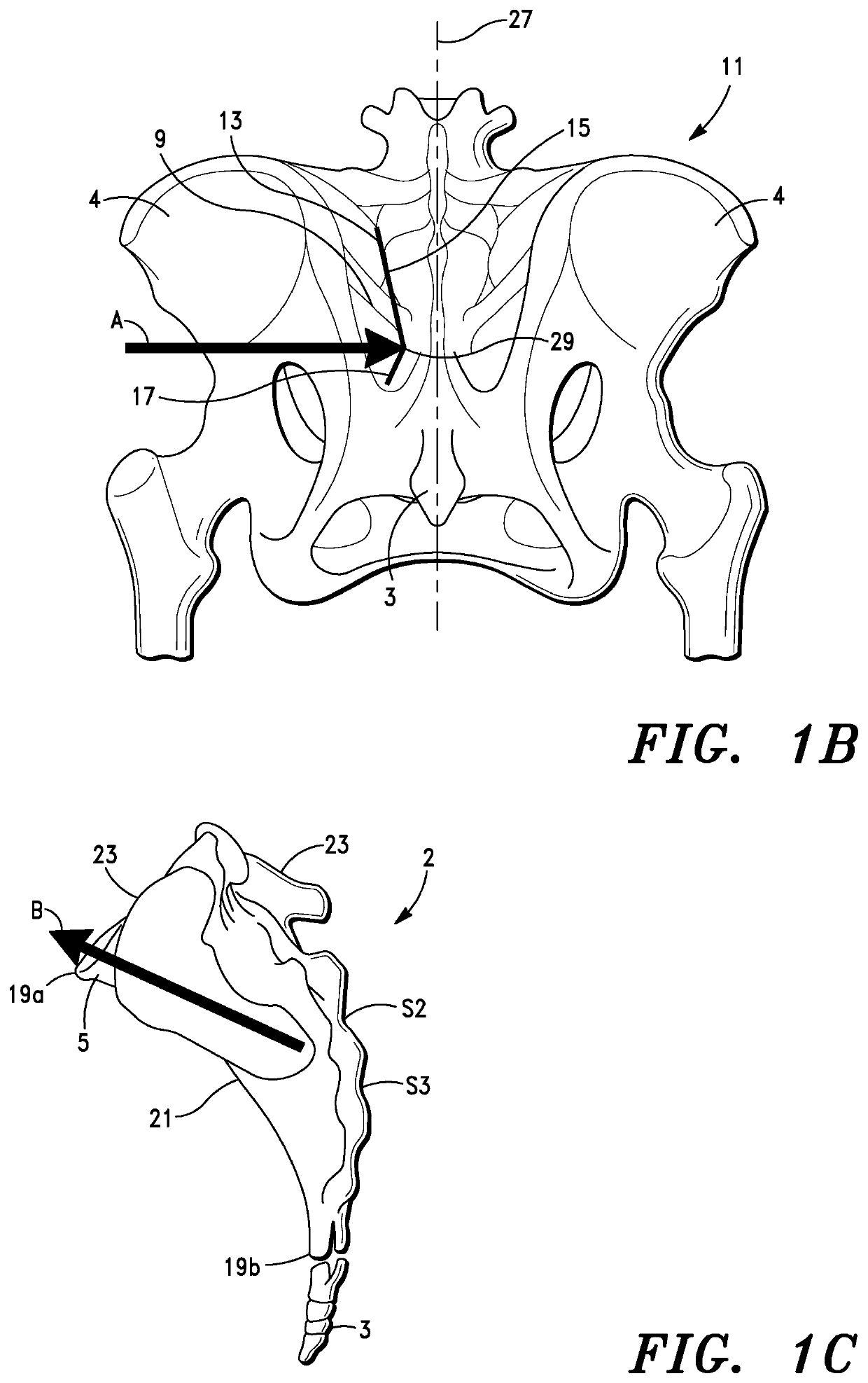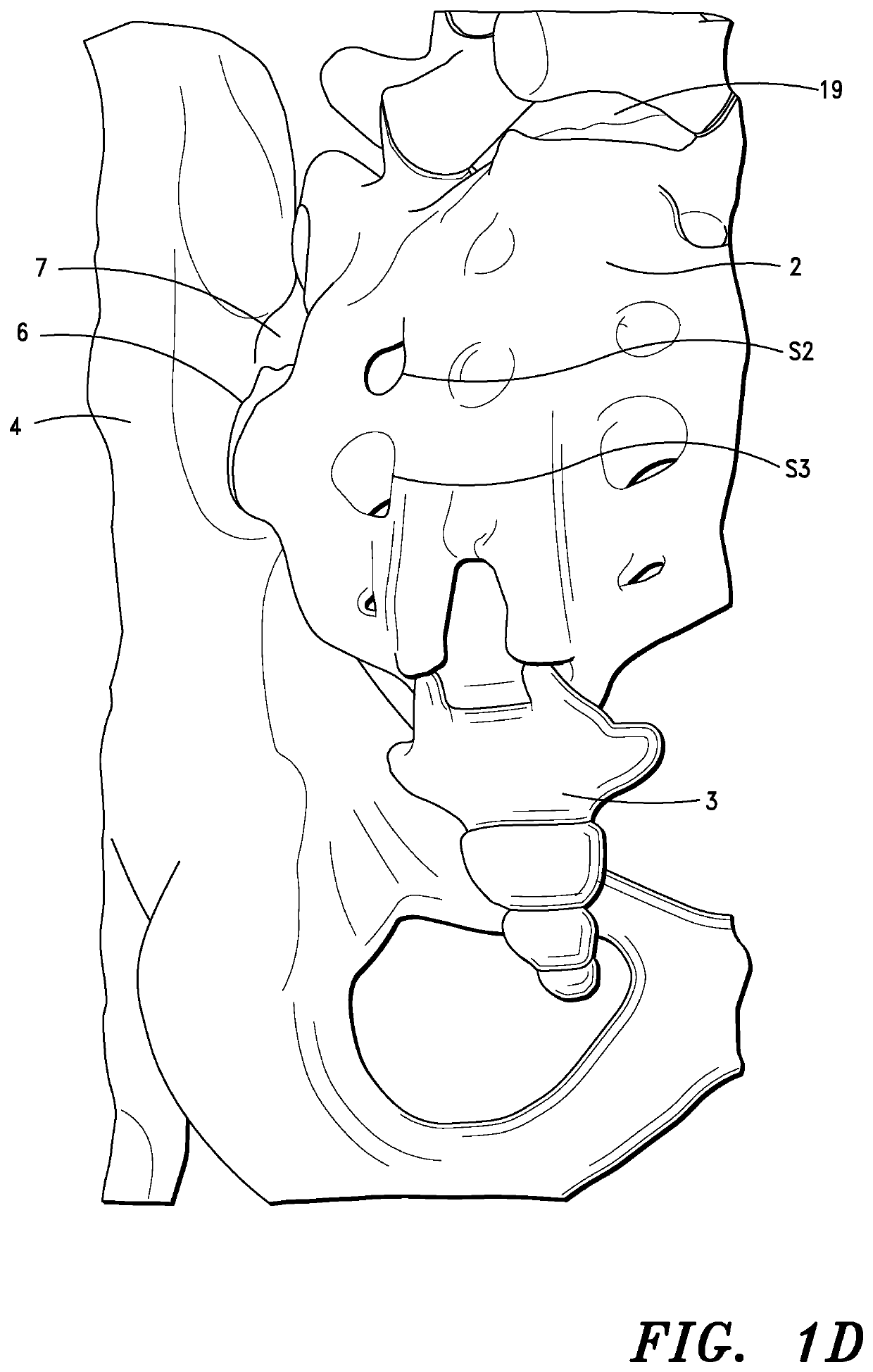Systems for Sacroiliac Joint Stabilization
a system and joint technology, applied in the field of systems and apparatus for stabilizing the dysfunctional sacroiliac joint, can solve the problems of requiring a substantial incision in and through the skin of the surgeon, the si joint dysfunction is suspected to be far more common, and the si joint dysfunction is difficult to trea
- Summary
- Abstract
- Description
- Claims
- Application Information
AI Technical Summary
Benefits of technology
Problems solved by technology
Method used
Image
Examples
examples
[0494]The following example is provided to enable those skilled in the art to more clearly understand and practice the present invention. The example should not be considered as limiting the scope of the invention, but merely as being illustrated as representative thereof.
[0495]An adult male, age 42 presented with a traumatic injury proximate the SI joint, resulting in a dysfunctional SI joint and significant pain associated therewith, i.e., a visual analog pain score (VAS) of approximately 8.0.
[0496]CT scans were initially performed to determine the full extent of the patient's injury, check for any SI joint abnormalities, and plan the SI joint stabilization procedure, including determining the incision site, guide pin trajectory, and SI joint prosthesis required to stabilize the dysfunctional SI joint.
[0497]Before proceeding with the SI joint stabilization procedure, CT scans were also performed to ensure proper alignment of the patient on the surgical table.
[0498]The SI joint sta...
PUM
 Login to View More
Login to View More Abstract
Description
Claims
Application Information
 Login to View More
Login to View More - R&D
- Intellectual Property
- Life Sciences
- Materials
- Tech Scout
- Unparalleled Data Quality
- Higher Quality Content
- 60% Fewer Hallucinations
Browse by: Latest US Patents, China's latest patents, Technical Efficacy Thesaurus, Application Domain, Technology Topic, Popular Technical Reports.
© 2025 PatSnap. All rights reserved.Legal|Privacy policy|Modern Slavery Act Transparency Statement|Sitemap|About US| Contact US: help@patsnap.com



